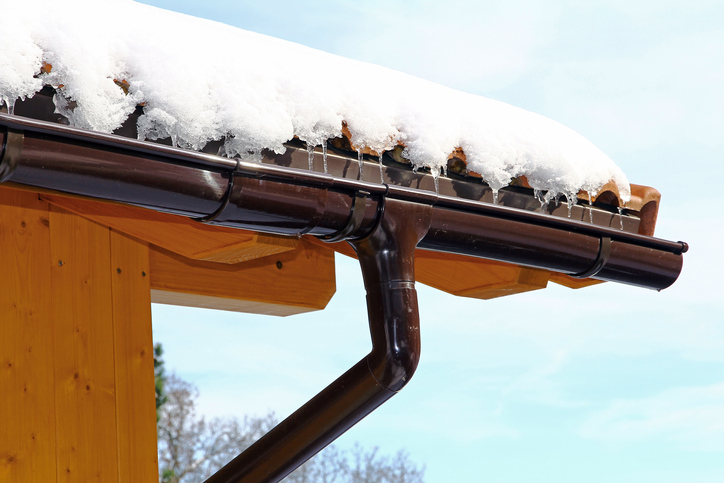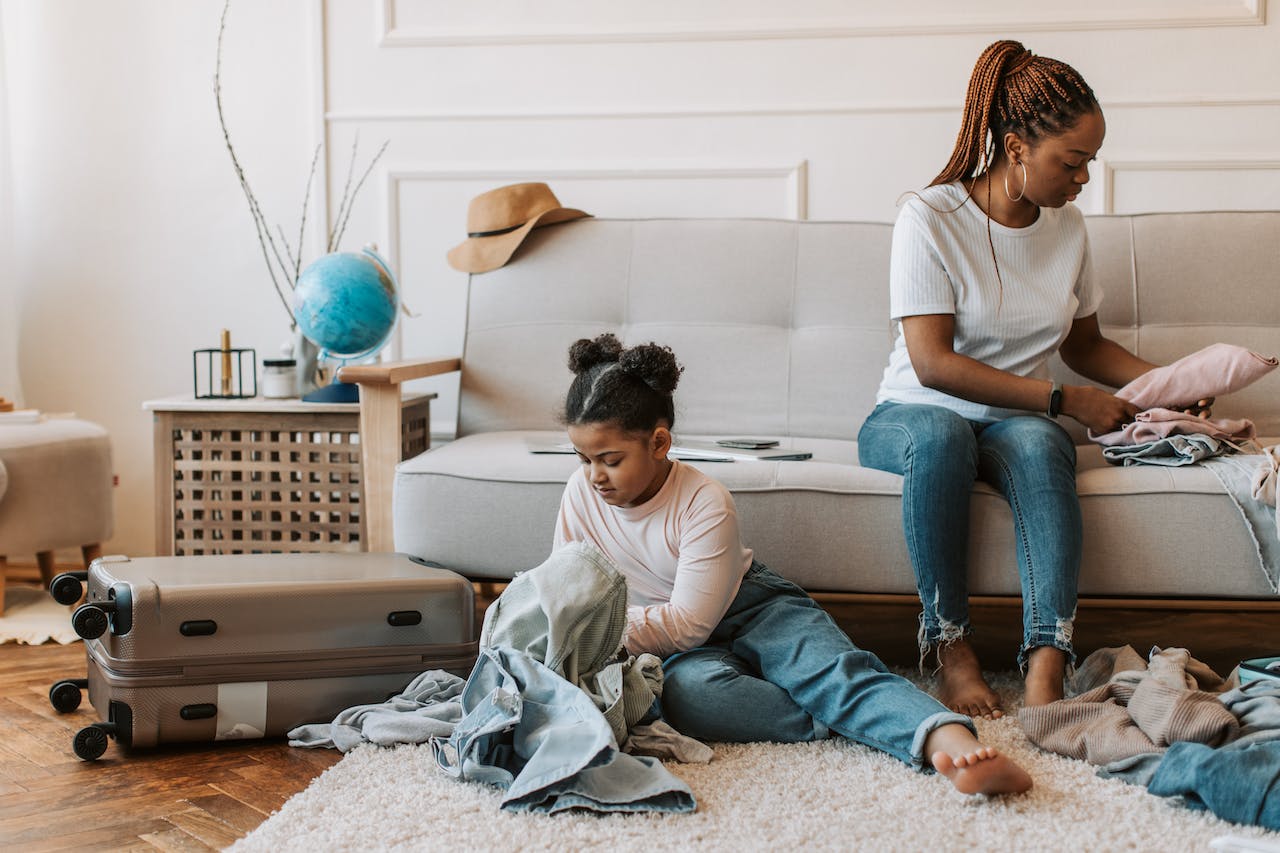As the outdoor temperatures start to drop, it’s essential to make sure that your home is prepared and ready for the cold weather ahead. No matter where you live, winter can present some challenges for safety, home maintenance, and more. Read on to learn some helpful winter tips and advice that will ensure your home and your family is ready for the cold, snowy days to come.
Dealing with snow
Snow is beautiful and fun to play in, but it can also present a few issues regarding your safety at home. Ensure you keep walkways and entryways free from the snow with regular snow removal by shoveling these areas throughout the winter. You can also do some things to deal with snowstorms that will make life easier for you and your family.
- Snow shoveling: Before you head outside to shovel, make sure you warm up your muscles and do some stretching to stay limber and flexible. Push the snow out of the way rather than lifting it, resulting in a strained back or other injuries. Use a lightweight plastic snow shovel when possible, take frequent breaks, and try to shovel the snow soon after it falls, so it’s lighter and less dense. Always dress in layers and wear proper attire like a warm hat, coat, and gloves.
- Snowstorm prevention: While none of us can control the weather, you can do some snowstorm preparation to keep you safe during and after the storm. Stock up on nonperishable items in case you’re snowed in, so you have plenty of food available. Charge all of your electronic devices before the storm hits if you lose power, so you have access to your smartphone for communications. If you must drive during a snowstorm, make sure your vehicle and your tires are in excellent condition and keep your gas tank full. Listen carefully to local weather forecasts or check the National Weather Service for updates on current conditions.
Home maintenance
Cold weather can wreak havoc on your home if you’re not prepared. By practicing a few preventative home maintenance tips, you can avoid things like frozen pipes or pests that may want to move into your home. Taking steps before winter arrives and following a few winter safety tips will keep you and your family safe and warm and your home operating the way it should.
Water pipe maintenance
Frozen water pipes can make life miserable during the winter. Depending on how bad they’re frozen, it can take several minutes to an hour or more for your pipes to unfreeze. Frozen pipes can also burst, resulting in a severe leak or a possible flood. To protect your water pipes during the winter, start by removing, draining, and storing outdoor hoses inside. Close all inside valves that supply water to outdoor hose bibs, and open outdoor hose bibs so the water can drain. Add extra insulation to places like your attic, crawlspace, or basement to help keep the temperatures higher. Look around for pipes and plumbing that may need additional insulation, such as the bathroom, kitchen, or laundry room.
You can install a water pipe sleeve for insulation or a self-regulating heating cable to heat any exposed pipes to prevent freezing. You can unfreeze water pipes by applying direct heat to a pipe section with a hairdryer, electric heating pad, or a space heater. Never use a blowtorch, charcoal stove, or kerosene or propane heater to thaw pipes since these can pose a serious fire hazard.
Heaters
Keep your home warm all winter with an inspection from a licensed HVAC company. A thorough inspection will ensure that your whole-home heating system is operating the way it should. Winter is a perfect time to change your air filter, too. A new air filter will keep the air inside clean, and it can prevent the furnace from clogging or breaking. Test out your thermostat to make sure that it’s working correctly as well. If you’re using a space heater, always keep it at least three feet away from furniture, bedding, and any other objects to prevent fire. Make sure you’re using the correct fuel source according to the manufacturer’s specifications. If you need to use a portable generator, always keep it running outside and place it as far away from your home as possible. Never use an oven to heat your home, and monitor candles if you plan to use them to warm up a room; a burning candle should never be left unattended. Install CO monitors if you have gas heat or a gas-powered space heater to keep you safe in case of a carbon monoxide leak.
Gutter cleaning tips
To protect your roof and your home, it’s essential to practice some gutter maintenance before winter arrives. Clean your gutter thoroughly and remove all leaves, twigs, and other debris. Check your gutter for signs of leaking or damage and replace any sections as needed. Make sure the slope of your gutters is adequate so that they’re able to catch and drain rain, sleet, and snowmelt. Inspect the downspouts to ensure that they’re directing water at least five feet away from the foundation of your home.
You can do a test run by running some water through the gutters with a garden hose to look for clogs or leaks. If you notice any issues, now is the time to make repairs or replacements as needed before winter arrives. If you live in an extremely cold climate, consider gutter heat tape to prevent ice dams that can damage your roof. You can also contact a professional that can install an electric heating cable for your gutters to avoid freezing.
Pest control during winter
When the temperatures drop, pests are looking for a place to get warm, which may mean they’ll try to move into your home. Practice some winter pest control by keeping your home and kitchen as clean as possible. Store food in airtight containers and take your garbage outside regularly to tempt pests to come inside for food. Look for any potential entry points, particularly around your attic and roof. These areas are often where larger pests like rodents and bats will come inside to nest during the winter.
Clean up your yard and remove piles of leaves, dead tree limbs, and take stacks of firewood as far away from your home as possible.
Safety and prevention tips
It’s crucial during the winter to practice some car safety and some fire safety at home. It’s also important to trim tree branches so that dead or rotting limbs don’t fall down onto your roof, resulting in serious damage.
- Fire safety: Make sure you’re doing some practical oven and chimney safety steps to prevent a possible fire. Start by getting your chimney professionally cleaned and remove any obstructions like branches, bird nests, or other debris. Have your chimney inspected for leaks too. Use a fire screen if you have a wood-burning fireplace to keep embers from getting onto your floors and furniture, which could cause a fire. Clean your oven thoroughly and always remove excess grease and fat, which can also be a fire hazard. Make sure the vent over your oven is operating correctly to allow smoke from cooking to escape.
- Car safety: Have your oil changed and get your vehicle inspected to make sure it’s ready for winter. Check the tires and get new ones if your tread is worn out. If your car is stuck in the snow before leaving the driveway, clear a path around the tires using a snow shovel and sprinkle the area with kitty litter to melt the snow. If you get stuck while you’re on the road, slowly move your car forward and backward to tamp down loose snow and give you more traction. Snow chains on your tires also make it easier to maneuver on roads with deep snow or ice.
- Trim tree branches: Trimming dead or too long tree branches will protect your roof and your family. Learn how to trim tree branches safely or hire a local landscape professional to help you. Cutaway limbs that are hanging over your rooftop since ice can build up and cause the branches to break off.
Other tips
Here are some more useful tips that will make dealing with the winter easier:
- Mudroom ideas: Create a mudroom design that makes it easy for the family to put their dirty boots and shoes away. Use durable boot trays or storage benches for footwear, and install some wall hooks for coats, hats, and umbrellas. Keep your mudroom clear of clutter and designate this space for winter items only during the colder months.
- Seasonal closet switch: Winter is a great time to clear out your closet and donate any items you no longer wear from the summer season. Hang sweaters, long-sleeve shirts, and other winter clothing in your closet and put tank tops and shorts away in storage. When you have access to your cold-weather clothing, it will be much easier to grab what you need and go.
With a few practical winter safety and maintenance tips, you can keep your home warm and your family safe. Be aware of potential fire hazards during the winter, and make sure you insulate your water pipes to prevent freezing. Do some easy pest prevention by keeping your home clean and check tree limbs and gutters so that everything is ready for winter precipitation. With a bit of planning, you can quickly get through the winter unscathed.




